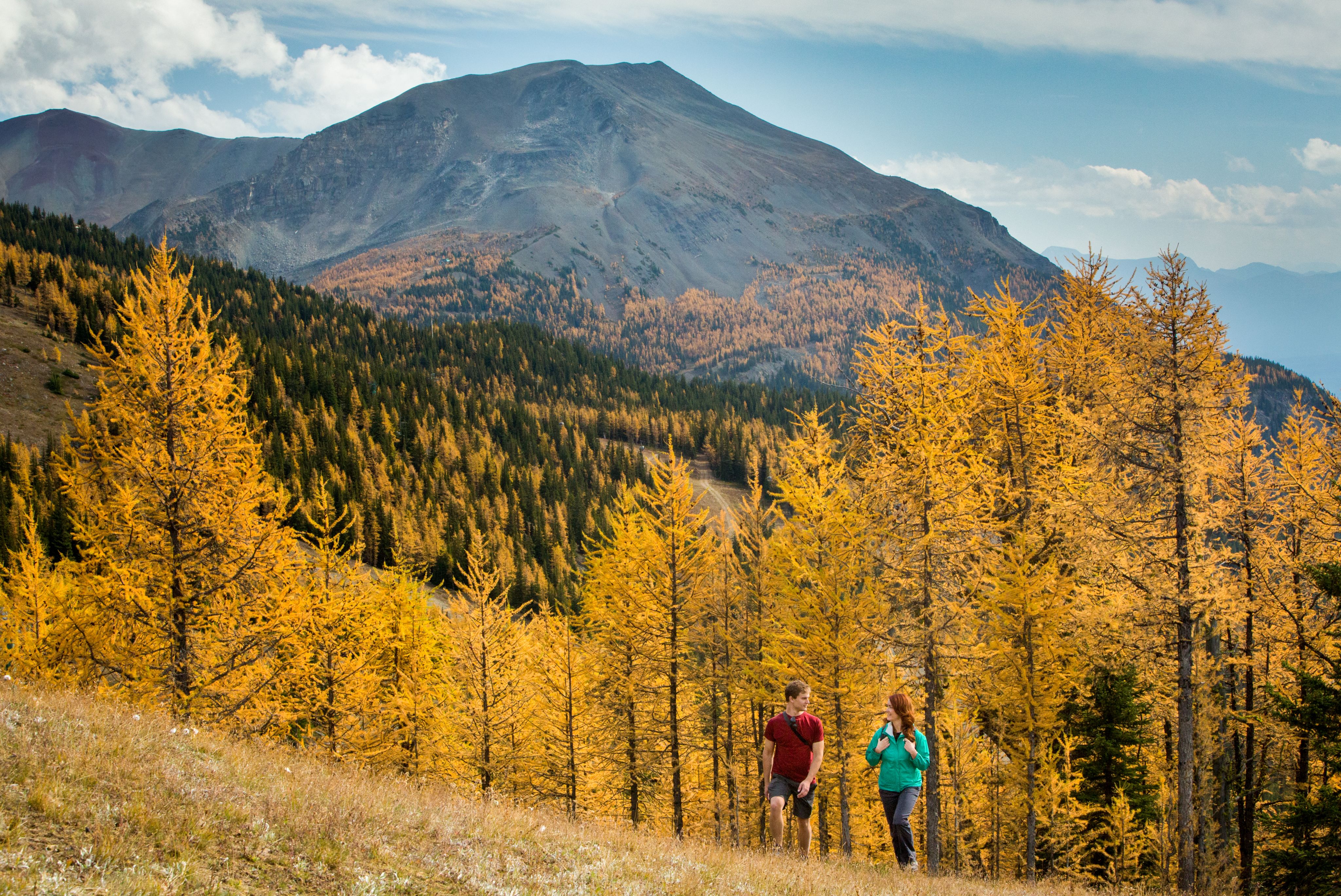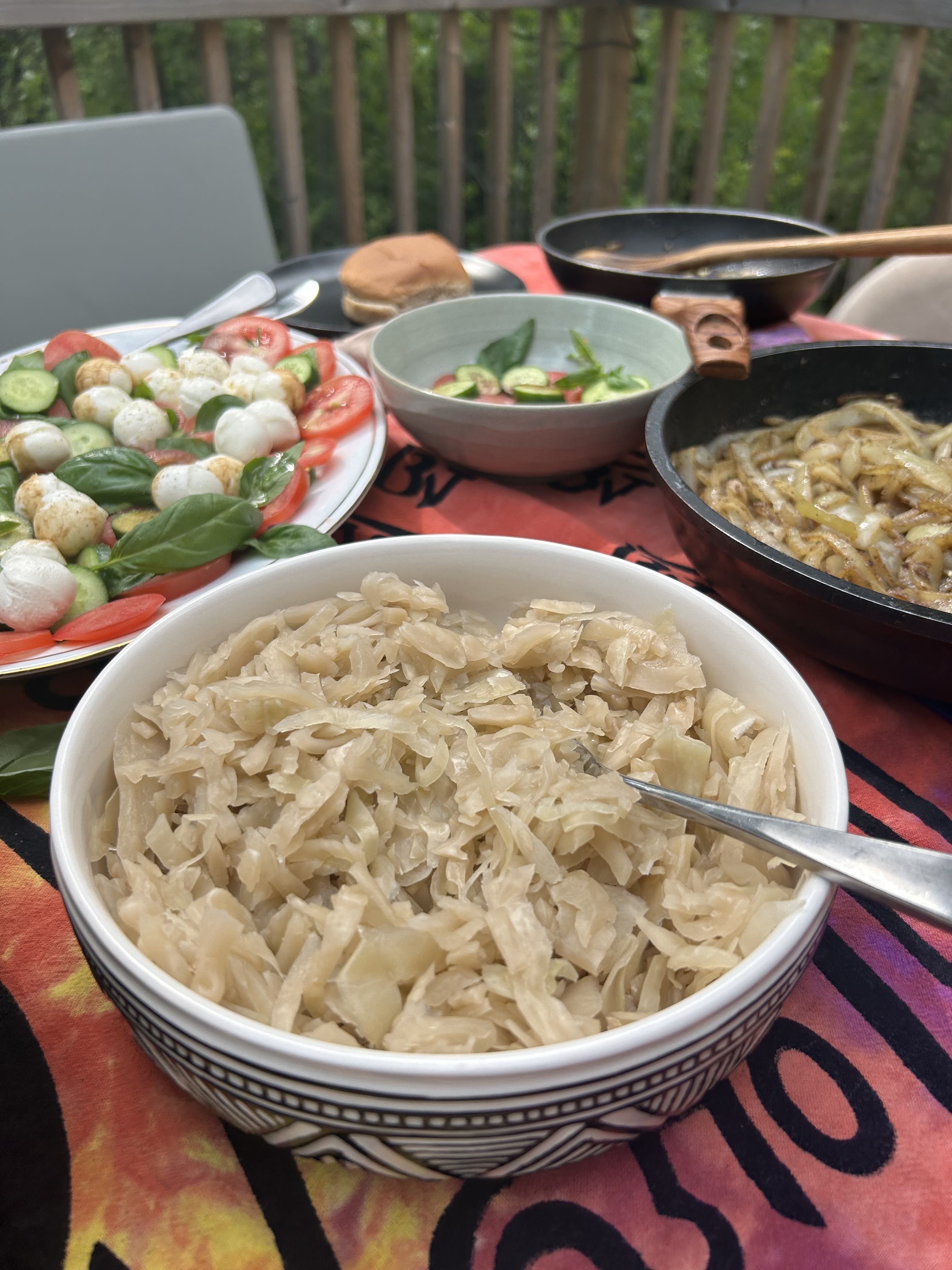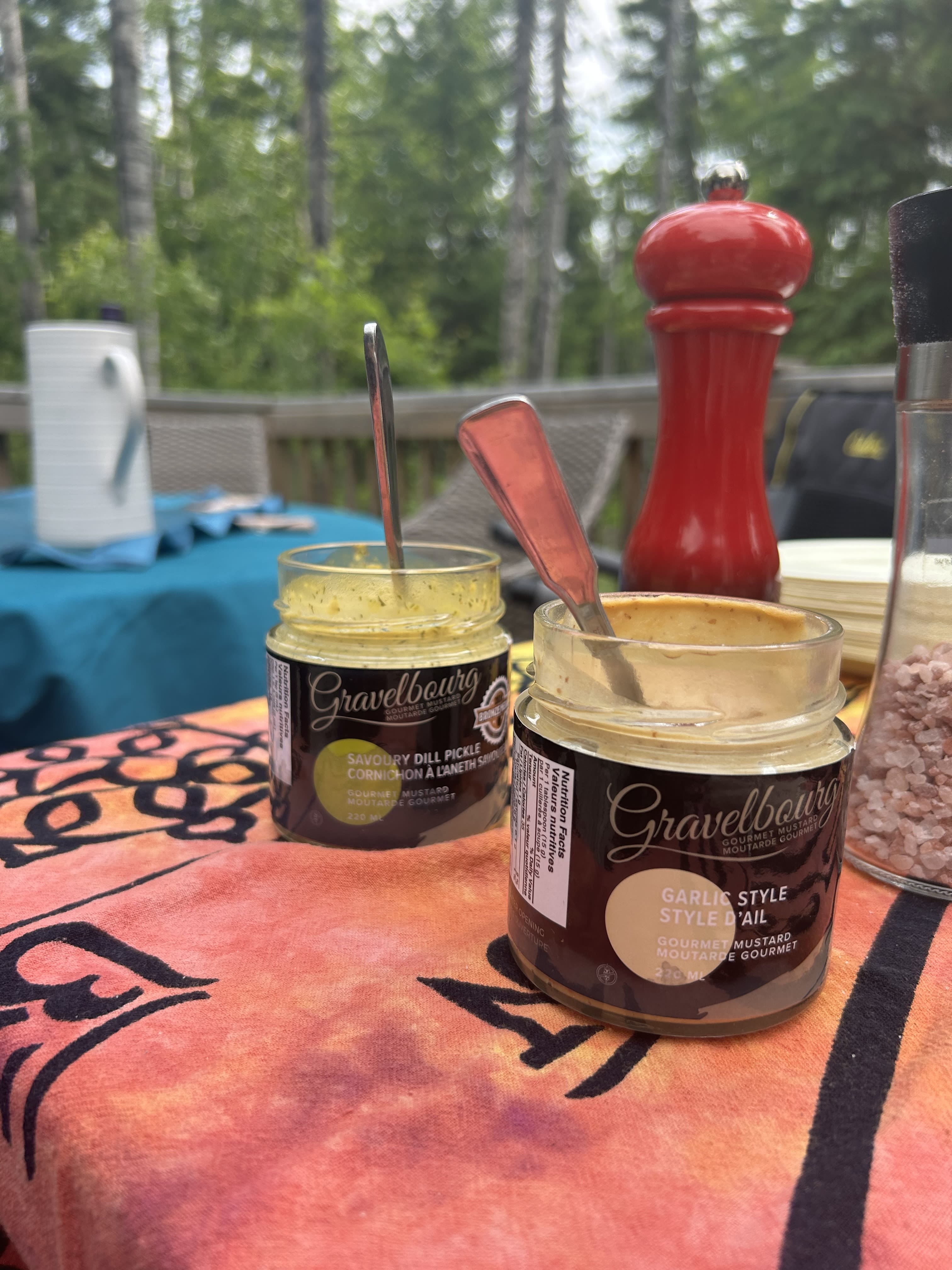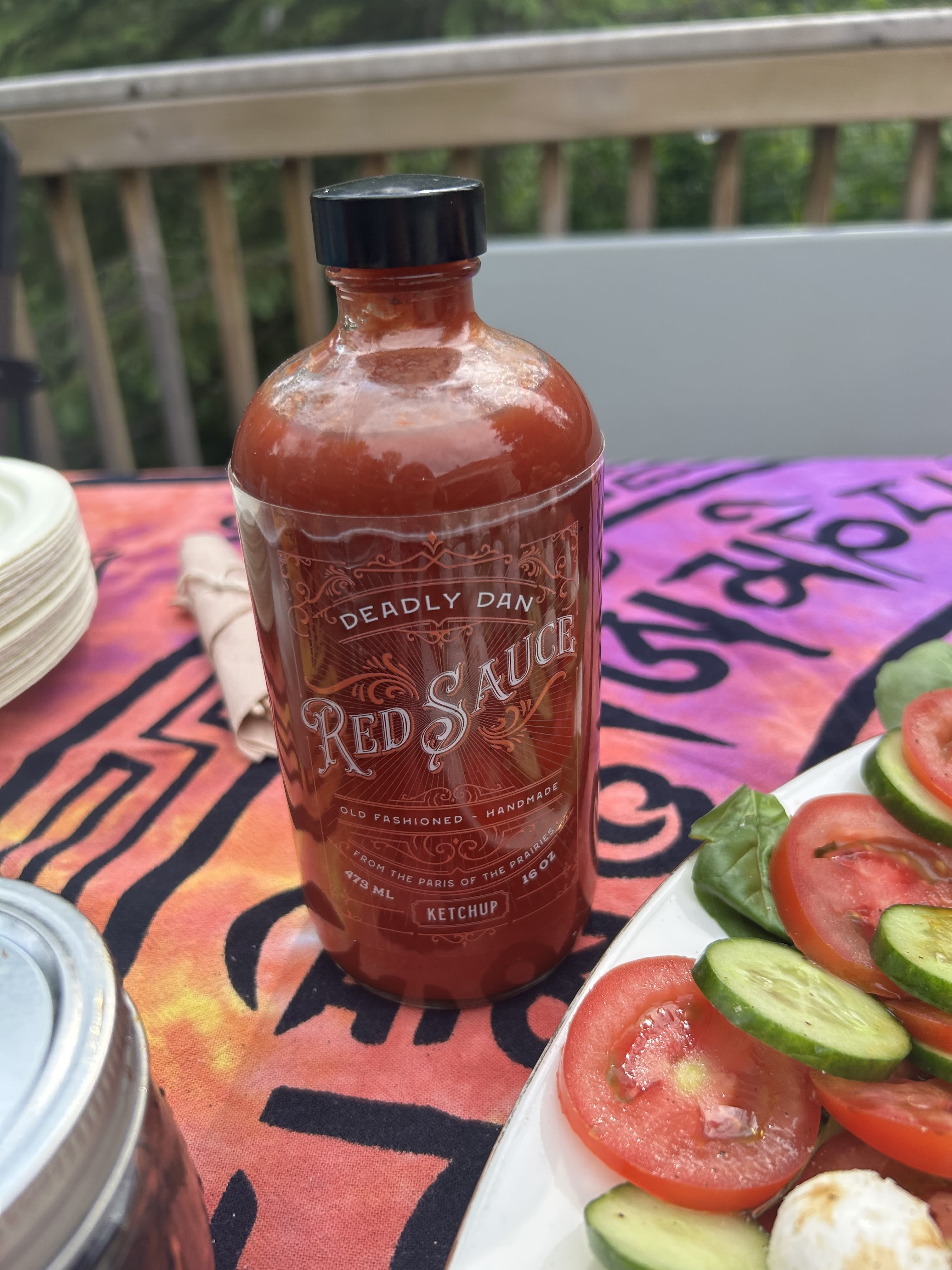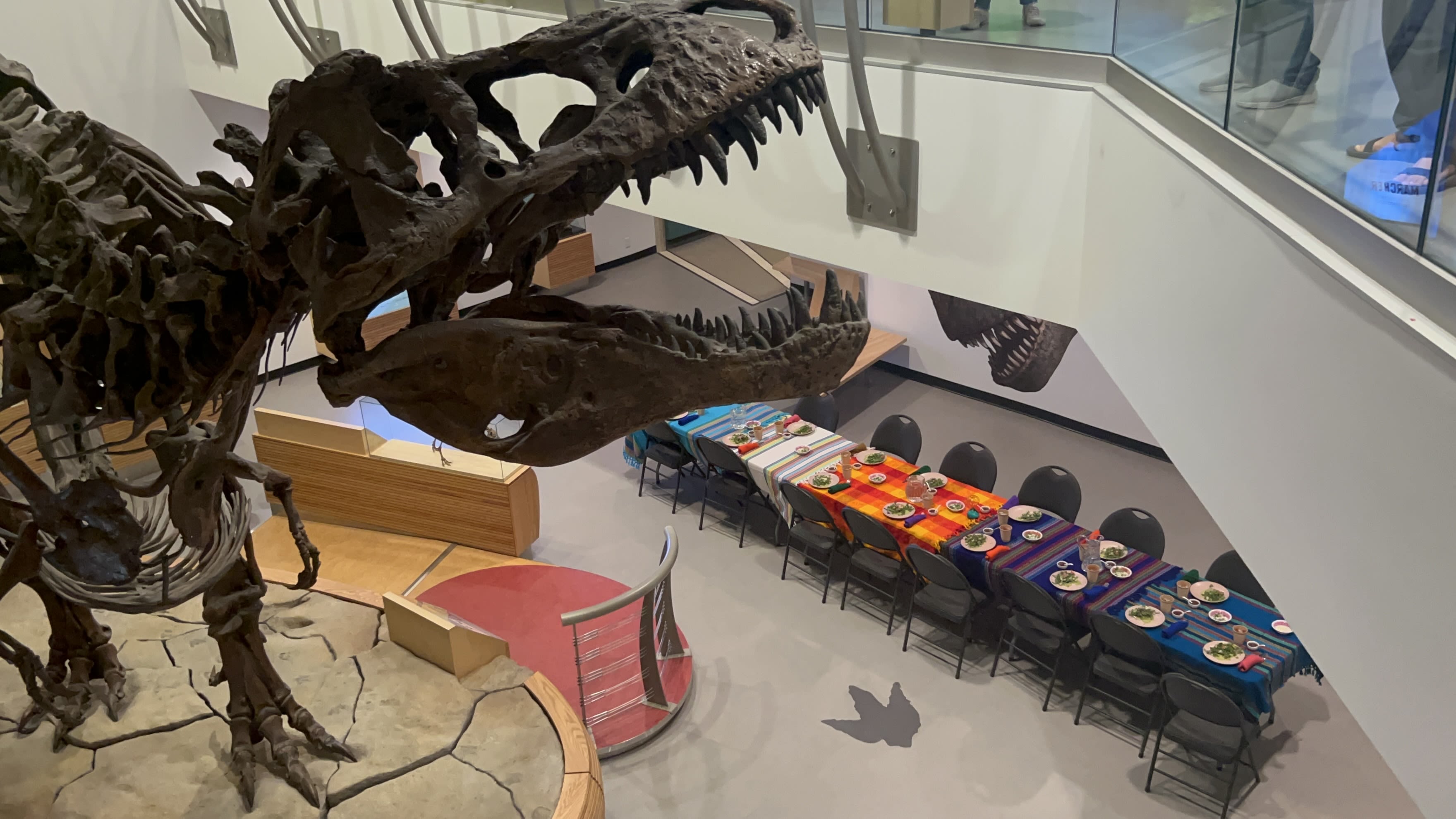A Story In Every Bite
Chef Jenni Lessard on Food, Land, and the Bonds We Share
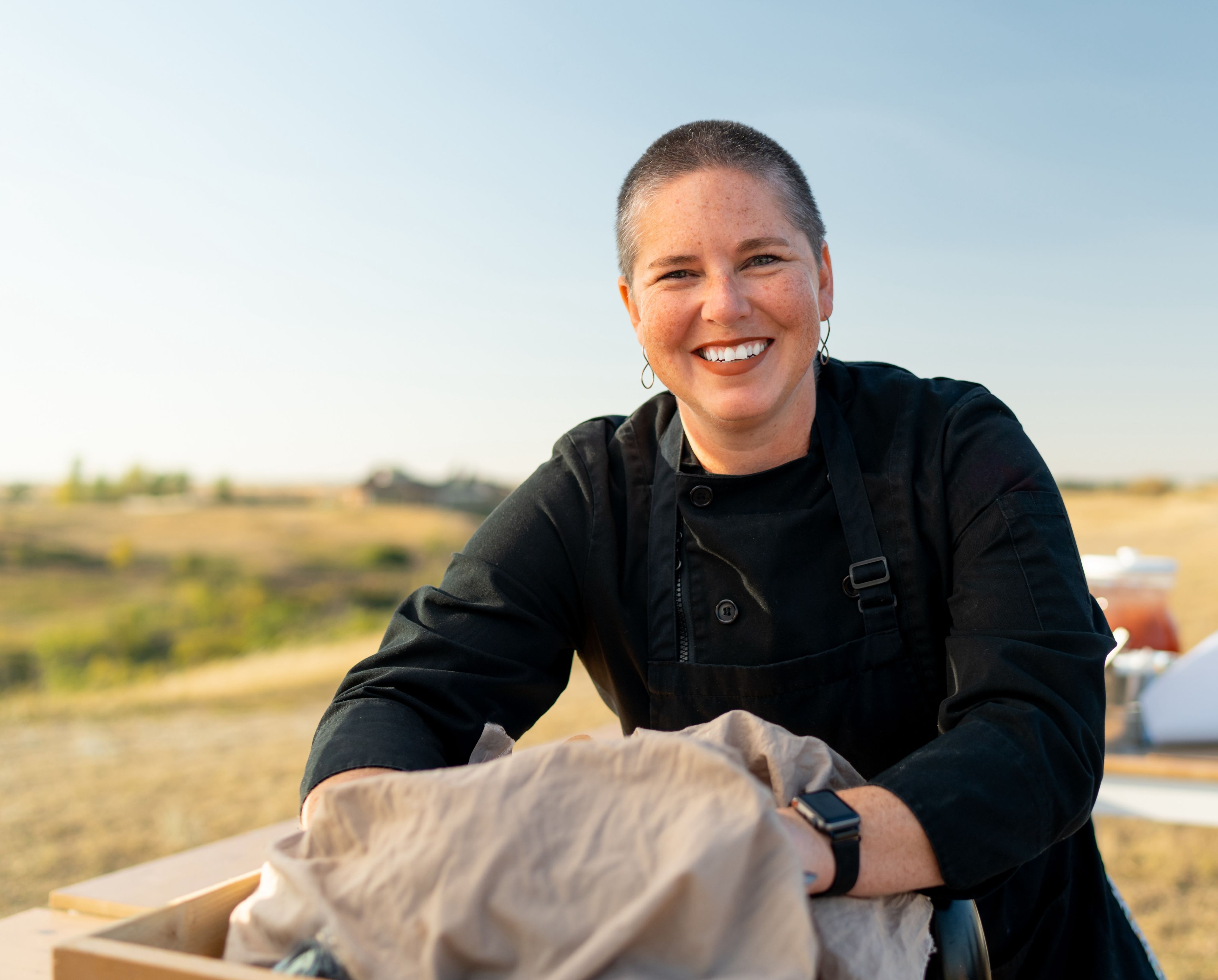
A Story In Every Bite
Chef Jenni Lessard on Food, Land, and the Bonds We Share
Photo: Tourism Saskatchewan
Photo: Tourism Saskatchewan
“This is a celebration of a lot of the ingredients that grow in the boreal forest,” says Jenni Lessard, the acclaimed Métis chef from Saskatchewan, as she flips sausages with a pair of red-tipped tongs.
Smoke curls through the trees while Jenni tells us about Jordan Lohneis, the chef behind Pig and Pantry, a nose-to-tail butcher shop in Saskatoon, where the sausages were made.
“The sauerkraut is also made by his team,” she adds, pointing to the crock of tangy cabbage beside jars of Gravelbourg mustard (did you know Saskatchewan is the heartland of mustard country?) and a bottle of Deadly Dan’s hot sauce (Saskatoon made!) — each product comes with a story Jenni is eager to share.
She sprinkles her fried onions — "I don't think you're allowed to have a sausage roast without fried onions?" — with sweet gale seasoning made by Boreal Heartland, an Indigenous company bringing sustainable employment to northern Saskatchewan.
I’m with a group of travel writers whose plans have been derailed by wildfires burning farther north. Some had hoped to paddle the Churchill River; others, like me, planned to follow Jenni through the Field to Shield culinary tour she runs with Adventure Destinations. It begins in Saskatoon and travels more than 500 kilometres north, crossing prairie, parkland and boreal forest. Over several days, guests fish northern lakes, learn from Indigenous knowledge keepers, and share long-table dinners featuring the flavours of each eco-zone.
Instead, we’ve made it only as far as Flora Bora Forest Lodging, a yurt retreat nestled in the trees on the edge of Emma Lake. After this meal, we’ll turn south, back past Saskatoon to the Dakota Dunes Resort and then into the wide-open Qu’Appelle Valley.
Jenni seems unfazed by the change, determined to give us a taste of the forest before we head back to the prairie. A warm breeze drifts through the clearing as she plates the sausages and begins another story.
"Like it or not, I always have a story attached to my food," Jenni tells me later. "You know the saying, 'you eat with your eyes?' I think there’s even more to it. The story primes your spirit and your digestion and your psyche by hearing about where the food came from."
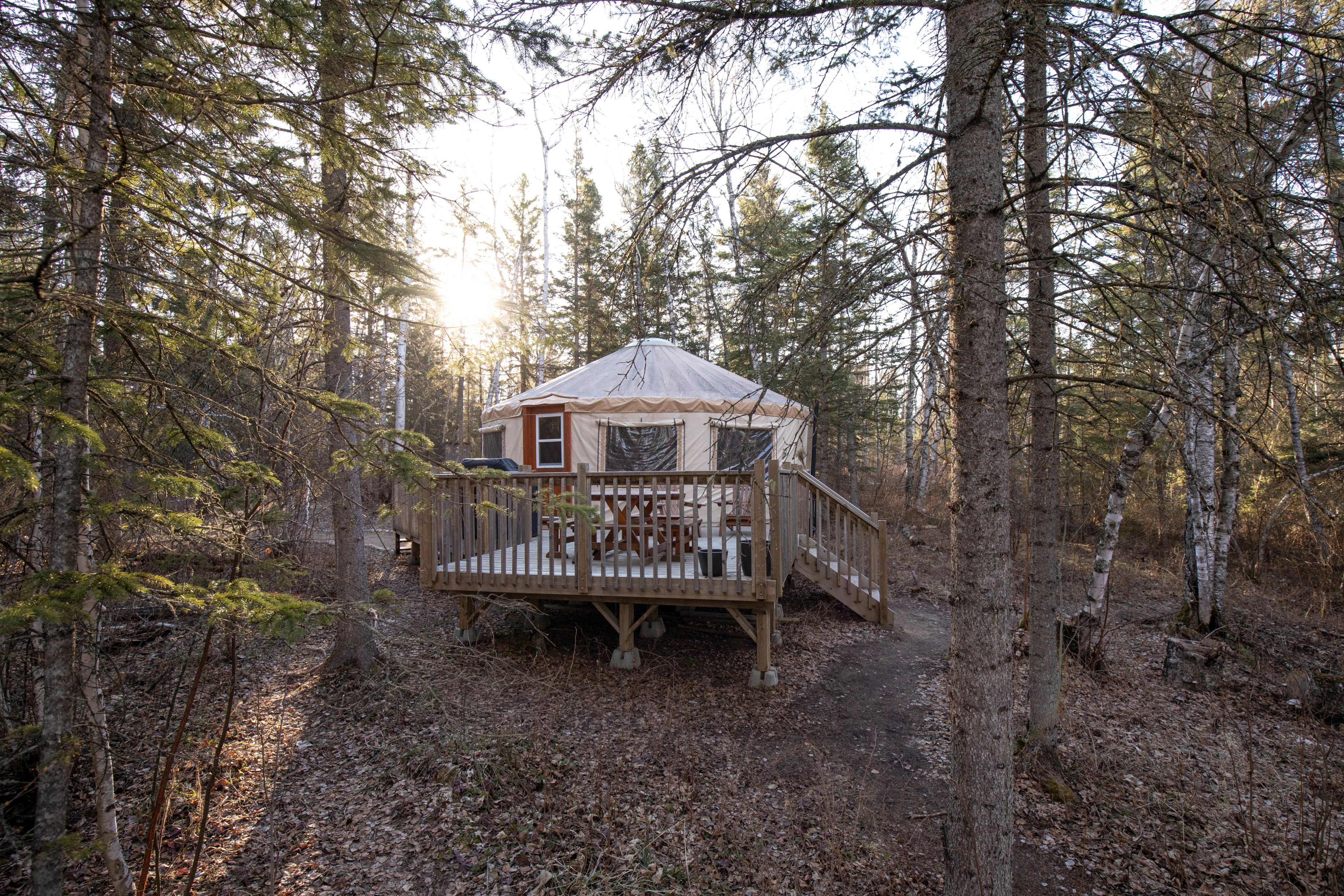
Jenni grew up on a small lake about 150 km north of where she’s now grilling the sausages. Surrounded by the boreal forest, just outside the town of La Ronge, her family lived without television or a telephone until she was in the fifth grade. She learned early to make her own entertainment.
“My sister was very sporty, so she’d be out chopping wood and making forts,” she remembers. “And I’d be cooking.”
When Jenni was eight, her family added another sibling into the mix: a foster brother named Andrew, who has cerebral palsy and is blind.
“When he came to us, he couldn’t eat solid food. The doctors told my mom, who was a nurse, that if he wasn’t swallowing food by the time he was two — he was 18 months when he came to live with us, so it wasn’t a lot of time — he’d probably need a feeding tube and would never be verbal.”
Determined, Jenni’s mother worked patiently with him until he could eat solids. At two and a half, he said his first word: “grapefruit.”
Growing up beside Andrew changed how Jenni thought about food. “If you think of a piece of lettuce, we see that it’s green and visually appealing,” she explains. “But if you just put that in your mouth before you bite down, it feels like rubber. An orange is juicy and you can taste the flavours right away, but with certain other foods, Andrew had to be coaxed into eating.”
So she invented language to bridge the gap. “With a green pea I’d say, ‘It’s like a little round ball and it’s going to pop in your mouth when you chew it.’ And with lettuce, ‘you know when Uncle Bruce cuts the grass at Grandma’s house and you can smell that green — that’s what it’s going to taste like.’"
Sometimes it didn't work, but many times it did.
The two even staged imaginary cooking shows. “For some reason, we had these French accents. He was Jacques, and I was Marie. And because it was the ’80s, we had this low-calorie living show. I’d put on my mom’s white blazer for a chef’s coat and tie a handkerchief around his neck. Then we’d go down to the lake, pick wild mint, and make a wild-mint banana cocoa-powder milkshake. That was our thing.”
Those early forest-side experiences planted a lasting seed. Long before Jenni became a celebrated chef and culinary consultant, she understood that food is never just for sustenance. It is story and connection — a way to bridge cultures, communicate feelings and nourish relationships.
“I’ve travelled a lot, especially in the last few years, but I can’t see ever leaving Saskatchewan. It's so much a part of me.”

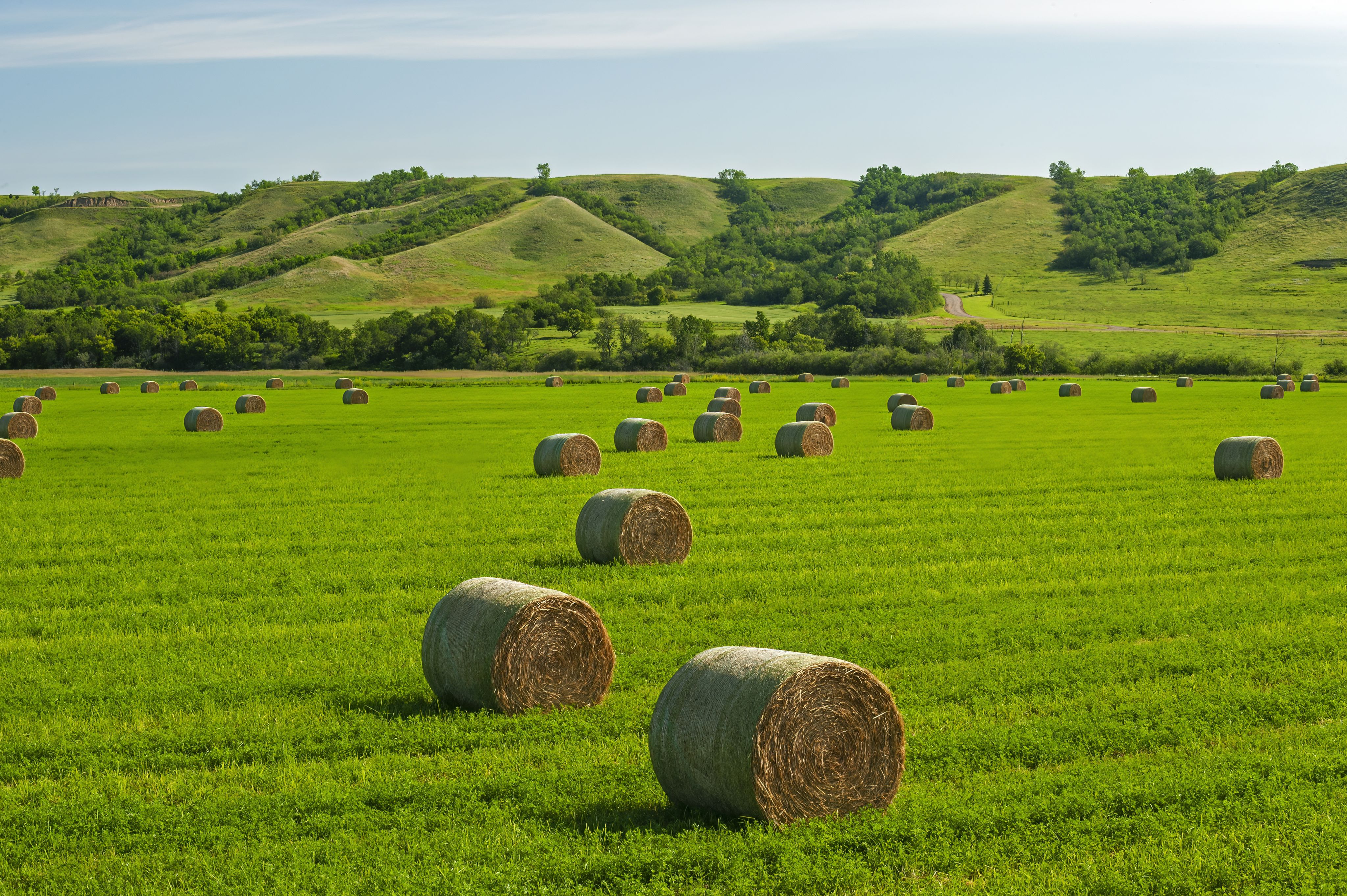

Jenni now makes her home in the Qu'Appelle Valley, far from the boreal home in which she was raised. But her culinary career has taken her throughout the province.
Her first foray into professional cooking — not to discount the Jacques-and-Marie show, of course — was in the summer before she started grade nine. At 14 years old, she heard about a need in the community and decided to act on it.
"My friend’s dad was an air traffic controller at the La Ronge airport. There was no food there other than a sad little vending machine and town was four kilometres away," she said. So she, alongside a couple of friends, got a $1,000 loan, rented a trailer and got cooking.
"And when I say we cooked, like we were just frying up little burgers and serving coffee and baked goods and stuff like that. But it was a start to see that, oh, this thing I love doing — this is a commercially viable thing.”
Since that early start, Jenni has had a prolific culinary career.
From running her own restaurant to working as the Executive Chef at Wanuskewin Heritage Park to serving as a judge on Firemasters on Food Network Canada, Jenni has become a fixture on the Canadian culinary scene.
As a citizen of the Métis Nation of Saskatchewan and a well-known chef, Jenni gets asked a lot to participate in events around the country. But she often turns these invitations down because it is not her culture that she's being asked to represent — and instead tries to connect organizers with a chef from the local community.
"I know my responsibility is to not take up all the space, just take up the space that’s appropriate to my lived experience and my expertise and what my heart is telling me I should be doing," she says.
Her love of storytelling and desire to not just feed, but actually nourish people has led her to open up a culinary consulting business where she can make a big impact by teaching, coaching, and continually learning. She also works closely with Indigenous Culinary of Associated Nations (ICAN).
When harvesting plants, she offers tobacco and tells the plants what she will be using them for; when cooking, she thanks the producers who made the ingredients she's using; and when she serves the food, you can be sure she will share her knowledge freely and with love.
“I’m not an influencer,” she says with a laugh. “I’ve become a trusted source to connect consumers, visitors, and potential marketplaces with different vendors because I’ve come about this knowledge from valuing interactions over transactions."
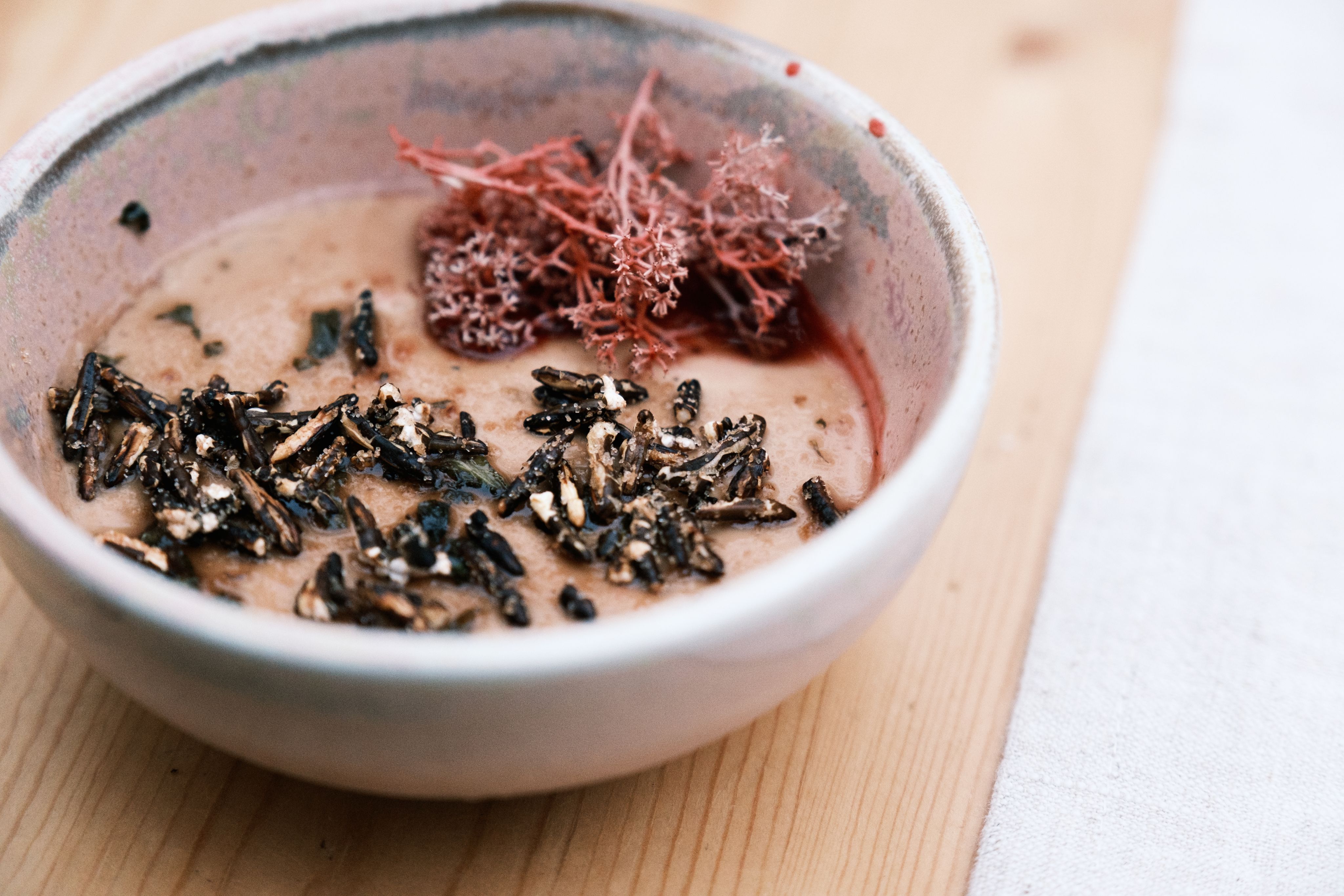
With Field to Shield, Jenni can pull a lot of that knowledge and storytelling into one immersive experience that goes beyond food.
Listen to Jenni talk about the experience in her own words:
After our forest lunch, Jenni spends the next few days showcasing the flavours of southern Saskatchewan. Ever the consummate host, she refuses to let a change of plans derail her chance to show off Saskatchewan — "it's not flat, it's not boring!" — and introduce us to the incredible array of experiences on offer.
One evening, she cooks a private dinner for us beneath the towering skeleton of Scotty the T. Rex at the Royal Saskatchewan Museum. It features a salad made with asparagus and coconut puree, local pea shoots, puffed wild rice and a spruce tip vinaigrette, followed by bison on tortillas made of nettle.
The next day, Jenni welcomes the whole group to her own home near Lumsden for a home-cooked lunch. As we dine on fresh Saskatchewan fish and two types of bannock, the stories continue.
Watching her, you can trace a clear line from the child who once described a pea as “a little round ball that will pop in your mouth” to the chef who leads guests on a feast across the province. For Jenni, sharing food and stories is more than hospitality — it’s a way of honouring the province, the land and the people she loves.
“I’ve travelled a lot, especially in the last few years," she tells me. "But I can’t see ever leaving Saskatchewan. It's so much a part of me.”

Step into Canada's Golden Hour
